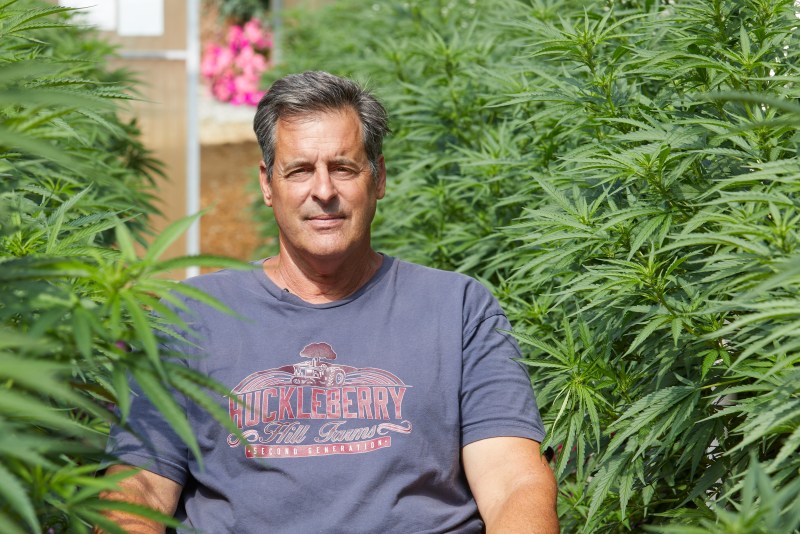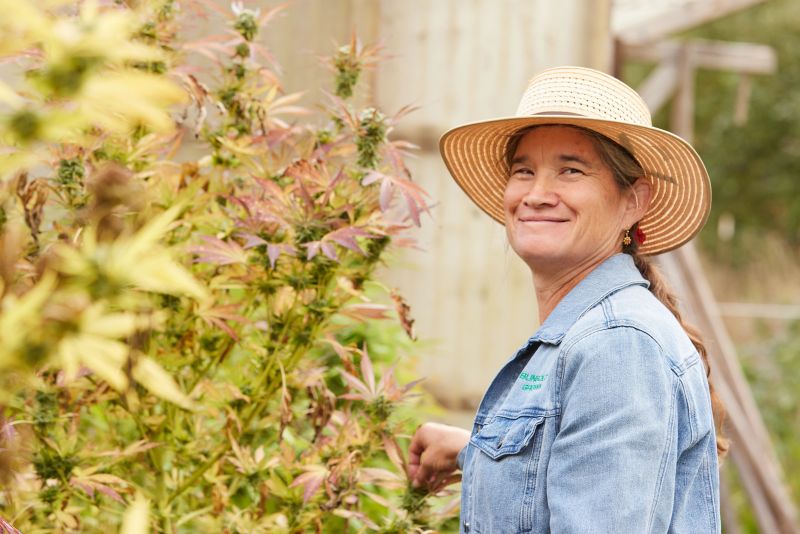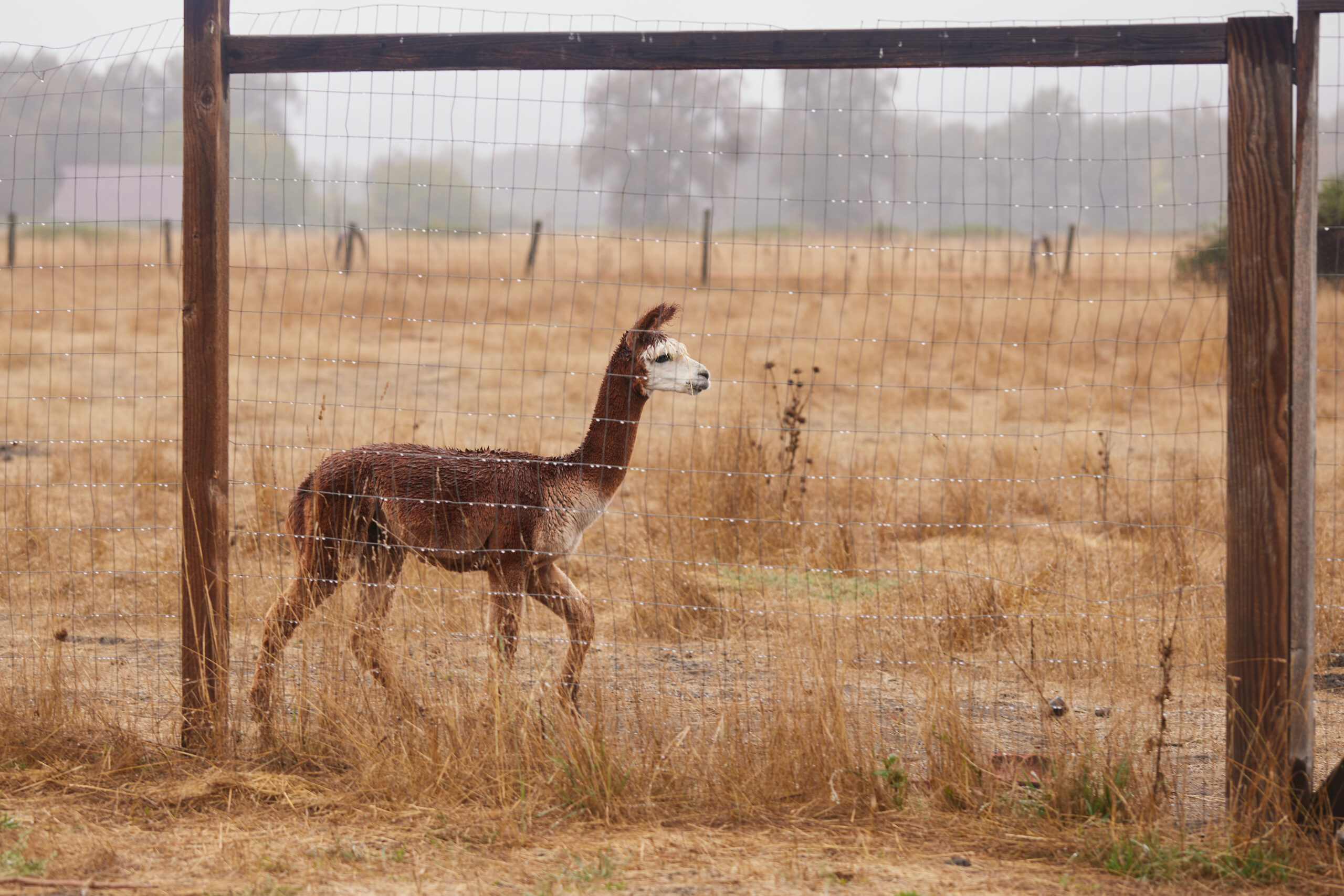Culture & industry
How hash sommelier Sarah Jain pairs hash with fruit
Published
8 months agoon
By
admin
In the ever-evolving world of cannabis connoisseurship, a new trend is taking the stage: the art of hashish and fruit pairing. This concept, embraced and refined by the esteemed hash sommelier Sarah Jain, promises a sensory adventure that transcends the boundaries of traditional consumption.
Learn about the fascinating realm of hash and fruit pairings, explore the inception of this culinary revolution, and understand the science behind it. Soon, you’ll discover the myriad flavors awaiting those who embark on this exquisite journey.
The genesis of pairing hash and fruit
The marriage of hash and fruit might seem unconventional, but a serendipitous moment in 2013 sparked Jain’s curiosity and led her down this gastronomic path.
Imagine a sweltering summer day, a revitalizing strawberry orange juice in one hand and a slab of OG shatter in the other. A new chapter in Jain’s life was written in this snapshot of time. Taking a fat dab and a sip of juice, she experienced a harmonious convergence of flavors that would spark her curiosity and fuel her passion for hash and fruit pairings.
Thus, an innovative culinary adventure was set into motion, resulting in a symphony of tastes that would tantalize the palates of enthusiasts around the globe.
Unveiling the Hash Sommelier
A decade ago, Jain embarked on a mission to meld her love for hash and culinary arts, revealing the intricate interplay between terpenes present in both hash and fruits. She shares her expertise by introducing individuals to a realm of endless flavor possibilities. Terpenes, aromatic compounds prevalent in both cannabis and food, are pivotal in shaping the taste and effects of hash.
Her passion for exquisite, small-batch hash and her unwavering dedication to gastronomy have propelled her to the forefront of hashish pairings.
Similarities with wine and beyond
Drawing inspiration from the storied tradition of wine and food pairing in fine dining, hash and fruit pairings emerge as a refined sensory experience similar to wine tasting. The choice of a quartz crystal banger mirrors the selection of a fine wine glass, both serving as vessels to enhance the aromatic journey.
Like wine connoisseurs swish, sip, and savor, hash enthusiasts inhale and exhale, allowing terpenes to weave their magic. The essence of hash and fruit pairings lies in savoring the flavors, not in attaining a heightened state of intoxication. Jain’s approach prioritizes sensory exploration, inviting participants to revel in the intricate dance of terpenes and taste.
Exploring the pairings
The heart of hash and fruit pairing lies in the meticulous orchestration of flavors. Jain’s expertise shines as she masterfully matches specific strains of hash with complementary fruits, creating an unparalleled gustatory experience.
Pineapple’s vibrant sweetness finds its dance partner in Grape Gas, creating a symphony of tangy delights, while Strawberry Banana hash terpenes combine smoothly with bold blueberries. Each pairing is meticulously curated to elevate the senses and immerse enthusiasts in the world of hashish with an extraordinary twist.
And berries, with their diverse profiles, take center stage in these pairings. Strawberries dance harmoniously with OG, and of course, there’s Jain’s favorite: golden raspberries and Zkittlez.
The star of the show, the golden raspberry, is a fleeting delight available during the late summer to early fall. This elusive fruit pairs harmoniously with Zkittles, a strain celebrated for its linalool-rich terpene profile. The synchronicity between golden raspberries and Zkittles gives birth to a flavor symphony that dances on the palate, leaving an indelible imprint. This seasonal indulgence stands as a testament to Jain’s dedication and embodies her commitment to crafting experiences that transcend time and space.
To get you started on your own fruit and hash pairings, here’s a quick look at which fruits pair best with which strains by their terpene prevalence:
| Fruit/Food | Terpene prevalence | Strain |
| Golden Raspberry | Cymene, Linalool, Beta Caryophyllene | Zkittlez |
| Blueberry | Linalool, Cymene, Caryophyllene | Banana or Strawberry-Banana strains |
| Strawberry | Linalool | OG strains |
| Dark Chocolate | Linalool, Myrcene, Ocimene | Papaya |
| Boysenberry | Cymene, Linalool, Beta Caryophyllene | Tractor Fuel (has Skittlez notes) |
Outdoor vs. indoor farming: A Terpene Tale
The distinction between outdoor and indoor farming is profound in the realm of hash and fruit pairings. The exposure to sunlight and natural elements imbues outdoor-grown cannabis with an unparalleled complexity of terpenes.
For resin production and hash, the sun-soaked goodness of outdoor cultivation is king. However, when seeking the finest flower, the controlled environment of indoor farming can yield exceptional results.
Ultimately, Jain advocates for the unmatched influence of the sun on terpene production, making a compelling case for the superiority of outdoor farming.
Do I have to get high to be a Hash Sommelier?
Just as a wine sommelier doesn’t need to indulge in excess to appreciate the nuances of a fine vintage, the world of hash and fruit pairings embraces a similar philosophy.
Jain’s vision extends beyond seeking a heightened state of intoxication; it’s about experiencing the symphony of flavors that dance between terpenes and taste. Just as wine connoisseurs take deliberate sips and elegantly spit, those exploring hash and fruit pairings can engage their senses without overwhelming their faculties.
Intriguingly, a modern tool that aligns perfectly with this approach is the ZenCo, a cutting-edge vaporizer with a cup-like design. This innovative device allows enthusiasts to take gentle sips of vapor, akin to savoring a fine wine, ensuring a controlled and measured experience. ZenCo embodies the essence of the hash and fruit pairing journey, offering an avenue to appreciate the intricate interplay of terpenes without succumbing to the high. This deliberate and considered approach elevates the entire experience, making it accessible and enjoyable for individuals of varying preferences and tolerances.
How to pair hash and fruit
Embarking on the enchanting journey of hash and fruit pairing is a sensory exploration that invites you to experience cannabis and nature’s bounty in harmonious tandem.
Follow this step-by-step guide to elevate your understanding and appreciation of this culinary art:
Step 1: Choose fruits and hash mindfully
Begin your hash and fruit pairing adventure by selecting your ingredients with intention.
Delve into the myriad of flavors and aromas present in various strains of hash and the diverse array of fruits available. Consider the terpene profiles of both hash and fruits to discover complementary combinations that will tantalize your taste buds. As noted above, consider starting with a berry of your choice and go from there.
Step 2: Choose the experience
Whether your goal is to enjoy the flavors without the high or to explore both aspects, prepare yourself for the journey ahead. Remember: You have the option to indulge fully or to embrace a more measured approach by “spitting” the smoke or not inhaling deeply.
Step 3. Heat up nail or load electronic rig
For those who choose to fully indulge, ensure your hash is ready for consumption.
Heat up your nail or load your electronic rig, creating the optimal conditions for a flavorful and controlled dabbing experience.
Step 4. Eat the fruit
As the nail heats up, and before taking your dab, start with the fruit of your choice. Place it in your mouth and allow the natural flavors and juices to dance on your palate, preparing your taste buds for the upcoming terpene explosion.
Step 5. Inhale your dab with the fruit’s essence
With the taste of the fruit still lingering in your mouth, inhale the vapor from your dab.
As you exhale, the terpenes from the hash will intermingle with the fruit’s essence, creating a symphony of flavors that heightens the experience.
Step 6. Embrace the terpene explosion
As you savor each inhale and exhale, relish in the terpene explosion that envelops your senses. Notice how the nuances of the hash’s terpene profile interact with the fruit’s natural sweetness, acidity, or richness.
Take your time to fully explore the layers of flavor and aroma that unfold with every breath.
Bottom line
The marriage of hash and fruit, guided by the discerning palate of hash sommelier Sarah Jain, has unveiled a world of flavors that tantalize the senses. This journey of exploration transcends traditional consumption, offering a harmonious symphony of taste and aroma.
The intricate dance of terpenes and taste becomes a sensory masterpiece with every carefully curated pairing. As we embark on this culinary revolution, we raise a glass (or quartz banger) to Jain, a visionary who has carved a path that bridges the realms of hashish and gastronomy, inviting us to savor the beauty of both.
You may like
-


The Economic Impact of Cannabis
-


“A big deal”: What the feds’ move to reclassify marijuana means for Colorado cannabis
-


Star signs and cannabis strains: May 2024 horoscopes
-


Yesterday’s Marijuana Rescheduling News, Explained
-


The Marijuana Industry’s Secret Playbook to Get Weed Legalized in All 50 States
-


The Green Rush to Colorado’s Multibillion-Dollar Weed Industry | WEEDIQUETTE
Culture & industry
Huckleberry Hill Farms and the history of the Whitethorn Rose cannabis strain
Published
2 months agoon
March 12, 2024By
admin
In the heart of southern Humboldt lies Huckleberry Hill Farms, a legacy outdoor cannabis grow started by John Casali. Unlike many of the regulated farms that sprouted up in the wake of Prop 64, Huckleberry Hill stood through the war on drugs era, and its story is steeped in passion, struggle, and resilience. It also led to the creation of the award-winning Whitethorn Rose cannabis strain.
 Gina Coleman/Weedmaps
Gina Coleman/WeedmapsIn the late 1960s, Casali, a teenager then, was immersed in the art of cultivation, learning the process from his mother. “[She] was my guiding light. She taught me the tenderness required for plants to thrive,” he shared. But the harsh realities of the war on drugs cast a shadow over their beautiful farm life. “My parents decided to cease cultivation due to escalating law enforcement. They got afraid of the multiple helicopters in the air throughout the year, dropping guys down on wires and eradicating weed.”
“It was all I knew; it was all I wanted to do — cultivate and honor what my mom had taught me.” — John Casali
Casali remained rooted in his passion, but it would eventually lead to his arrest and 10-year prison sentence in 1996. “One morning, I woke up to 30 federal agents coming up my driveway. They held a nine-millimeter to my head, and for the next nine hours, they searched my place. A year and a half after that, they came back with an arrest warrant.”
 Gina Coleman/Weedmaps
Gina Coleman/WeedmapsHis arrest, considered one of the longest federal incarcerations for a non-violent cannabis offense, struck a harsh chord, especially for someone who’d never even received a speeding ticket before. And while serving time in prison, tragedy struck his family. His parents, who had been traveling and fishing for months aboard a commercial albacore boat, encountered a devastating accident, and Casali’s mother tragically passed away. He recalled this period as one of the most challenging phases of his incarceration. “Those years tested my spirit, but the community’s support kept me going.”
Casali was released in 2004, and he found himself in a changed landscape, one where attitudes toward cannabis had massively shifted — no more helicopters over properties. Still driven by his passion for cultivation, he resumed his cannabis journey and even received a symbolically powerful gift from a friend: a preserved plant cut that was used to breed the Whitethorn Rose strain, an honor and testament to him and his mother’s legacy.
 Gina Coleman/Weedmaps
Gina Coleman/WeedmapsThis genetic preservation — maintaining a strain for a decade — embodies an emotional journey where friendship, loyalty, and love for the craft transcend the bounds of time and adversity. Casali created this unique strain by crossing Paradise Punch and Lemon OG.
Paradise Punch had been borne from his mother’s collaboration and was crafted for its early harvesting properties, allowing it to avoid possible mold due to October rains. The Lemon OG was a gift from a friend; combining the two was a convergence of heritage and camaraderie. With time, the strain gained the notoriety it so rightly deserved.
Whitethorn Rose, a strain forged during the war on drugs, now blossoms in a reformed era. It’s a symbol of endurance, community resilience, and triumph.
Moreover, testing by Columbia University in New York revealed the specific complexity of Whitethorn Rose. It boasts over 60 different terpenes and a staggering 444 cannabinoids. One such rare terpene found in this strain is selinadiene, which carries potential therapeutic properties.
Its emergence in the regulated folds of California’s cannabis market is due to its persistence and the unbreakable spirit that defines Huckleberry Hill Farms. Collaborations with Belle, Frenchy’s Cannoli apprentice from Heritage Mendocino, amplified its presence, leading to multiple Emerald Cup wins. This year, over 90% of the farm is devoted to cultivating Whitethorn Rose.
 Gina Coleman/Weedmaps
Gina Coleman/WeedmapsThe journey from cultivating alongside his mother in the late ’60s to overcoming incarceration and emerging stronger, determined to honor his roots, defines John Casali’s personality. Huckleberry Hill Farms is inspirational and deeply rooted in honesty, community, and an unquestionable passion for sun-grown cannabis.
Huckleberry Hills Farms is getting ready to hit California’s market, and you must try the amazing Whitethorn Rose strain. This cultivar has a remarkable history and a uniquely exotic floral flavor, making it a distinctive cultivar worth experiencing.
The post Huckleberry Hill Farms and the history of the Whitethorn Rose cannabis strain appeared first on Weedmaps News.
Culture & industry
Terroir and tradition: growing craft cannabis and the art of dry farming at Sunboldt Grown
Published
2 months agoon
March 3, 2024By
admin
When cruising down the Avenue of the Giants in Humboldt County, one might not realize there’s a hidden gem for cannabis enthusiasts just around the bend. Nestled along the Eel River in the heart of the Emerald Triangle lies Holmes Flat, a picturesque locale surrounded by towering Redwoods. The scenery? Simply breathtaking, drawing visitors in with its lush, fertile ambiance.
There, you’ll find Sunboldt Grown and its founder, Sunshine Cereceda, a local legend with soil under her nails and a heart as expansive as the California sky.
 Gina Coleman/Weedmaps
Gina Coleman/WeedmapsBorn in San Luis Obispo and raised in Humboldt since the age of seven, Cereceda grew up amidst the wilderness near Garberville in a community of activists and artists dedicated to preserving the region’s majestic trees. Tending to a garden since she was knee-high, she credits her mother’s green thumb for instilling in her a deep love for organic cannabis cultivation.
The challenges of craft cannabis in a commercial world
Her journey to becoming an Original Gardener is rooted in her upbringing within Humboldt’s activist community, where she formed deep connections to the land. She sold her first pound of weed at 14 years old in order to finance her education, which led to her developing her expertise through years of hard work and dedication. To this day, Cereceda’s OG status persists.
 Gina Coleman/Weedmaps
Gina Coleman/WeedmapsHowever, the shift from the underground market to the passing of Proposition 215 in 1996 and Proposition 64 in 2016 brought about major changes, turning her world upside down. What was once a dance with law enforcement became a tangled web of legalities and over-regulation. She grappled with the demands, yearning for authenticity amidst the new state of chaos. The transition from medical to adult use felt like a crash course in bureaucracy, leaving her fatigued and longing for the simplicity of yesteryears.
California’s legal landscape poses significant hurdles for craft farmers like Cereceda. Mandatory distribution and the absence of direct sales leave traditional farmers at the mercy of intermediaries, diluting the spirit of their craft.
 Gina Coleman/Weedmaps
Gina Coleman/Weedmaps“The beauty of craft does not sell itself,” she said, “We have a big disadvantage not being able to do direct [cannabis] sales … Compliance demands encroach upon precious time meant for nurturing our crops.” She dreams of a future where small farmers receive the support they need to thrive and where craft is cherished and celebrated in the marketplace.
Dry farming and the return to terroir
One of the characteristics that sets Cereceda apart from other growers is her cultivation techniques. She’s a farmer who doesn’t water her plants — a practice known as “dry farming.” It’s a centuries-old technique that involves cultivating crops without irrigation, relying solely on natural precipitation and soil moisture.
 Gina Coleman/Weedmaps
Gina Coleman/Weedmaps“Dry farming is about embracing the land and its natural rhythms,” she explained, “It’s a minimalist approach that allows terroir to shine through, bringing forth the true essence of the plant.” By eschewing irrigation and adopting low-intervention methods, dry farming conserves water and fosters a deeper connection between the farmer, the land, and the final product. “It isn’t suitable everywhere, but in regions like Humboldt, it’s worth pursuing … We avoid water addiction and enable plants to adapt naturally, resulting in a more resilient crop.”
Along with composting and strategic planting, Cereceda has honed her dry farming skills, growing cannabis that embodies the unique characteristics of Humboldt’s soil and climate.
 Gina Coleman/Weedmaps
Gina Coleman/WeedmapsAs the sun dipped below the horizon, it cast a warm glow over the rolling hills of Holmes Flat, where one thing was abundantly clear: Cereceda’s journey was far from over. From navigating the complexities of legalization to pioneering sustainable cultivation methods, she embodies the spirit of innovation and resilience that defines Humboldt’s cannabis culture.
Her focus on craftsmanship and terroir-driven cultivation is encapsulated in her products, growing craft cannabis that maintains the essence of Humboldt’s fertile soil and pristine climate.
The post Terroir and tradition: growing craft cannabis and the art of dry farming at Sunboldt Grown appeared first on Weedmaps News.
Culture & industry
Organic farming and regenerative agriculture
Published
3 months agoon
February 9, 2024By
admin
In the vibrant yet challenging landscape of California’s cannabis community, Sun Roots Farm is a rare gem situated in Covelo, California. Driving up its winding entrance will lead to a picturesque landscape, unveiling the incredible experience of visiting the farm’s gorgeous gardens. There, you’ll be greeted by towering cannabis plants reaching 12+ feet high and weighing an impressive 10 – 20 pounds each.
Founded by Forrest Gauder and Patricia Vargas, Sun Roots Farm is a testament to the resilience and integrity within the cannabis community.
By embracing a lifestyle around sustainability, they’ve created an enchanting, forest-like atmosphere with their approach, growing massive plants requiring a ladder for proper care. This landscape is common in Mendocino County, and due to dry weather, it makes for the perfect environment for growing colossal cannabis plants.
The founders’ vision of regeneration
Over the past 12 years, Gauder and Vargas have transformed Sun Roots Farm into their permanent residence. With its foundation rooted in regenerative agriculture, the couple not only cultivates cannabis plants but also tends to various vegetables, herbs, fruits, fungi, native medicinal plants, and perennial gardens.
To nourish their garden, they rely on contributions from their animals, with coops full of chickens and fields of alpacas serving as an exemplary model of regenerative agricultural practices. The farm aims to increase biodiversity and introduce closed-loop farming, where farmers recycle all organic material back into the soil and the farm. This system fosters a harmonious coexistence between the land and its inhabitants.
Exclusive seeds and strains
The farm takes pride in its commitment to exclusive seed cultivation, a distinctive approach that sets them apart. Gauder described the process: “We grow all our plants from seed yearly. From the year before, we’ll select pollen and put it on certain plants to make new [strains] — we’ll then collect those seeds. By the middle of February, we’ll crack open the chosen varieties, starting them in a greenhouse … and propagating them until they reach five-gallon pots.”
The decision to grow exclusively from seed is rooted in the farm’s philosophy of embracing genetic variability and maximizing plant vigor. “The reason behind growing from seed … is the genetic variability,” said Vargas. “We grow exclusively from seed. Local breeding has played a pivotal role in shaping plants that are finely adapted to the valley’s conditions, showcasing positive characteristics such as mold resistance, pest resistance, frost resilience, and more.”
Sun Roots Farm’s staple strain is Velvet Purps, bred locally over ten years ago. This strain descends from the valley and is made from various crosses by Gauder’s family and colleagues. Its origin begins with Jah Goo, crossbred with its brother T2 and Magic Bus, giving rise to a cultivar with impressive purple characteristics.
“The plant produces anthocyanins to protect itself, but it’s also purple,” explained Gauder. “You can find anthocyanins and all sorts of fruits and vegetables, too. It’s the pigment, the color. This compound has beneficial aspects when consumed by humans, like antioxidants, and it protects the plant. We had a bad frost a few years ago that destroyed a lot of gardens around here, but all our purple plants were just fine.”
Packed with trichomes and a captivating blend of berry and pine aromas, Velvet Purps luxuriously unfolds on the palate. This unique strain, locally bred and cultivated by Sun Roots Farm and a select few friends only, expresses a distinctive charm. Beyond its sensory delights, it delivers a tranquil and relaxing buzz, making it an ideal choice for evening consumption.
In a market saturated with options, the exclusivity of strains like Velvet Purps emphasizes the farm’s commitment to offering something truly exceptional.
A farm dedicated to sustainable practices
The farm is also Dragonfly Earth Medicine (DEM) certified. “To be DEM is to achieve a certification beyond organic through third-party verification,” explained Vargas, “It’s a community committed to intentional growth and the creation of closed-loop systems.”
Sun Roots Farm maximizes what the land naturally provides, whether it’s blackberry vines for tea or alpaca manure from their animals. “It’s similar to a homesteading lifestyle,” Vargas continued, “incorporating the cultivation of cannabis with an element of integrity into the product.” From closed-loop systems and water conservation to wildlife sanctuaries and companion planting, the farm is a testament to sustainable living techniques.
Vargas also emphasized the importance of observation and mindfulness in their approach, “Take a moment to observe before you go ahead and start harvesting or before you go ahead and start crunching all over the earth.” Gauder added, “As long as we keep stuff covered in the garden, magic always happens. So we’re feeding the bugs, which eat the material on the ground that feeds the plants. It’s a continual cycle of life, rebirth, death, life, rebirth, death.”
The farm extends its commitments beyond the cultivation season. After harvest, they break down plants, mulch with oak leaves, and cover them with hay, creating a winter blanket that transforms into a layer of beautiful topsoil come spring.
At Sun Roots Farm, a calming environment and sustainable living encourage a deeper connection to the products they make and the ones we consume. The farm is a reality where integrity, intention, and regenerative practices converge to create a sanctuary of sustainable cultivation in the heart of California.

The Economic Impact of Cannabis

“A big deal”: What the feds’ move to reclassify marijuana means for Colorado cannabis

Star signs and cannabis strains: May 2024 horoscopes

Yesterday’s Marijuana Rescheduling News, Explained

The Marijuana Industry’s Secret Playbook to Get Weed Legalized in All 50 States

The Green Rush to Colorado’s Multibillion-Dollar Weed Industry | WEEDIQUETTE

DEA plans to move to reschedule marijuana as a lower-risk drug

What is a Jamaican Steam Chalice and Why Should You Try Smoking Weed Out of One?

These Two Iconic Cannabis Companies Could Disappear

Amsterdam to ban cannabis in its red light district

Distressed Cannabis Business Takeaways – Canna Law Blog™

United States: Alex Malyshev And Melinda Fellner Discuss The Intersection Of Tax And Cannabis In New Video Series – Part VI: Licensing (Video)

Drug Testing for Marijuana – The Joint Blog

What you Need to Know

Cannabis, alcohol firm SNDL loses CA$372.4 million in 2022

NCIA Write About Their Equity Scholarship Program

City Of Oakland Issues RFP For Employee Training Programs

It has been a wild news week – here’s how CBD and weed can help you relax

A new April 20 cannabis contest includes a $40,000 purse

UArizona launches online cannabis compliance online course
Trending
-

 Cannabis News1 year ago
Cannabis News1 year agoDistressed Cannabis Business Takeaways – Canna Law Blog™
-

 One-Hit Wonders1 year ago
One-Hit Wonders1 year agoUnited States: Alex Malyshev And Melinda Fellner Discuss The Intersection Of Tax And Cannabis In New Video Series – Part VI: Licensing (Video)
-

 drug testing4 months ago
drug testing4 months agoDrug Testing for Marijuana – The Joint Blog
-

 Cannabis 1011 year ago
Cannabis 1011 year agoWhat you Need to Know
-

 Marijuana Business Daily1 year ago
Marijuana Business Daily1 year agoCannabis, alcohol firm SNDL loses CA$372.4 million in 2022
-

 Education1 year ago
Education1 year agoNCIA Write About Their Equity Scholarship Program
-

 Education1 year ago
Education1 year agoCity Of Oakland Issues RFP For Employee Training Programs
-

 Cannabis1 year ago
Cannabis1 year agoIt has been a wild news week – here’s how CBD and weed can help you relax



